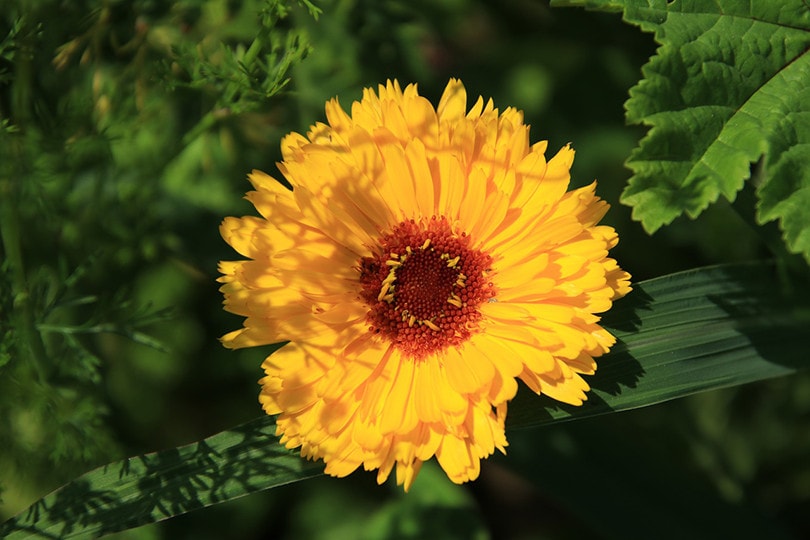How to Grow Marigold Indoors: 12 Tips & Tricks
-
Ed Malaker
- Last updated:

Marigolds have a long history in Mexico, and they are also popular in the United States because they’re available in many different colors and are easy to grow. Many people want to know if marigolds are suitable for growing indoors, and the short answer is yes. Several varieties of marigolds grow well indoors, so keep reading as we provide you with a step-by-step guide that includes all the tips and tricks that you’ll need for a successful indoor marigold garden.
The 12 Tips & Tricks for Grow Marigold Indoors
1. Before You Begin: Choose a variety

Before you do any planting, you’ll need to choose a variety of marigolds to grow. Four types work especially well: the French marigold, signet marigold, triploid hybrid marigold, and the dwarf African marigold. We recommend one of these to get started, but other choices are available.
French marigolds
French marigolds are an extremely popular variety that produces yellow, red, and orange flowers that will make your home look fantastic all year long. They are also edible, so you can put them in a salad or add them to your favorite dish. This variety tends to grow 6 to 12 inches tall, so they are perfect for a tabletop, countertop, or shelf.
Signet marigolds

Signet marigolds have smaller, flatter flowers than the French variety, and they’re also edible. The orange, yellow, and red flowers are attractive and work as a mosquito repellent, so you can take them out on the porch when you’re trying to relax in order to avoid getting bit. Signet marigolds can vary in height considerably, from 6 inches to 2 feet tall.
Triploid hybrid marigolds
The triploid hybrid is a fun version of marigold to grow because it produces large round flowers all year long. It has a longer growing season than many other varieties, but it also has low germination, making it harder to get it started. Triploid hybrid marigolds grow up to 3 feet tall and are quite large.
Dwarf African marigold
The dwarf African marigold looks great in the home and is easy to grow. Besides its appearance, it has many medical uses. For example, you might find it in treatment programs for diabetes, kidney and liver problems, malaria, diarrhea, prostate inflammation, varicose veins, and eczema. Dwarf marigolds tend to stand 10 to 12 inches tall.
2. Prepare your setup
Container
The pot that you use to start your marigolds should be about 4 inches wide and stand about 4 inches tall. Make sure there are plenty of holes in the pot to drain out any moisture.
Soil
Marigolds are tolerant of almost any soil-based potting mix, and any standard variety should work great.
Fertilizer
When you start your marigolds, you want to provide them with a fertilizer that has equal parts nitrogen, phosphorus, and potassium. However, once the flowers are growing well, you want a fertilizer that is high in phosphorus and low in nitrogen and has a potassium level between the two.
Light

Marigolds are native to hot climates, so they enjoy plenty of sunshine and won’t mind if the temperature gets high. Keep the plants near windows to help them receive plenty of sunlight, or use a grow light to ensure that they get at least 5 hours of direct sunlight each day.
- Fill your planting pot with dry soil and pack it down slightly, so you can measure how much soil you need before dumping it into a large mixing bowl.
- Add a small amount of fertilizer and water before mixing the ingredients well and putting them back in the planting pot.
- Plant three seeds about ¼ inch deep in the center of the pot.
- Keep the soil at about 70 degrees Fahrenheit, which is typically easy indoors, but you can use a heating pad to make sure the soil does not get above 90 degrees Fahrenheit.
- Keep the soil moist but not wet, and you should see sprouts in 5 to 10 days.
- Most marigolds will do fine in the original pot, but if you choose a large variety, you may need to transplant it into a larger pot.

- Water regularly but make sure the soil is well-drained.
- Only apply water to the soil. If you get too much water on the leaves, it can create powdery mildew.
- Remove dying blossoms before they go to seed in order to promote new blooms. Pinching the flowers where the bloom meets the stem will help the plant fill out.
- For more blooms, don’t use fertilizer during the growing season. Fertilizer produces more foliage but reduces blooms.
 Summary
Summary
It isn’t that difficult to grow marigolds in your home. As long as you keep the soil moist and ensure that they receive plenty of sunshine, these plants will do great. Many people are surprised by how fast they grow, and they will produce flowers all year long, so they are sure to be one of your favorite plants.
Featured Image Credit: Marjonhorn, Pixabay
Contents
